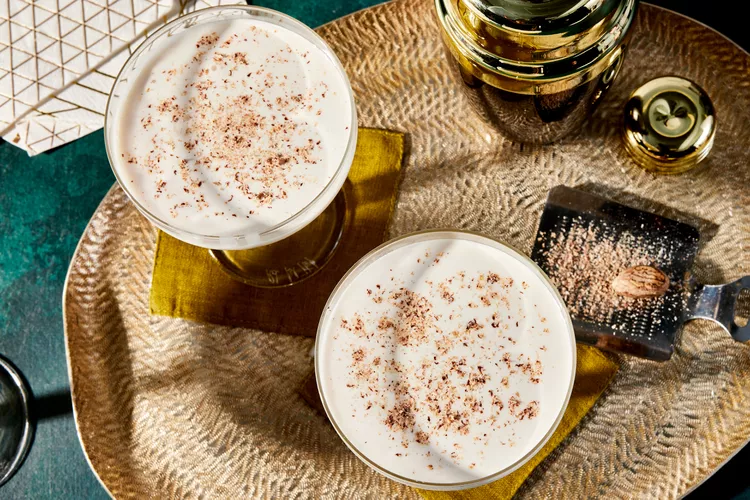The Brandy Alexander, once on the verge of obscurity in the annals of cocktail history, has made a triumphant return. In recent times, the revival of rich and sweet cocktails, reminiscent of the indulgent past, has paved the way for the resurgence of retro “dessert” drinks. Amidst this revival, we champion a libation with a distinguished pop-culture legacy: the Brandy Alexander, famously known as John Lennon’s signature cocktail.
Matthew Korzelius, bar manager at The Roosevelt Room in Austin, Texas, describes the Brandy Alexander as the original chocolate martini, offering a unique twist by replacing the standard vodka with a dark, fruit-derived liquor like brandy. The result, according to Nick Hassiotis of Foundation Social Eatery in Alpharetta, Georgia, is an opulent beverage teetering on the edge of a boozy milkshake, with the warmth of Cognac and a touch of nutmeg evoking fireside coziness.
The history of the Brandy Alexander reveals its evolution from a gin-based concoction to the present-day blend of brandy (commonly Cognac), crème de cacao, and heavy cream. Jena Ellenwood, cocktail educator at Dear Irving & Raines Law Room in New York City, notes its Prohibition-era roots, where the allure of cream and sugar could enhance any spirit. The Brandy Alexander’s popularity persisted into the mid-20th century, featuring prominently in films like “Days of Wine and Roses” (1962) and even becoming a noteworthy element of John Lennon’s “Lost Weekend” in the 1970s.

Regarding the choice of spirit, Cognac emerges as the preferred base for the Brandy Alexander, thanks to its rich, complex flavors that complement the chocolate milkshake-like essence. However, Ellenwood suggests that the “Alexander treatment” can extend beyond brandy, experimenting with various spirits like J.J. Corry Irish Whiskey for a decadent yet light nod to Irish cream.
For those eager to craft a Brandy Alexander, the essential ingredients include heavy whipping cream for a luscious texture, brandy (preferably Cognac), crème de cacao for chocolate notes, ice for a chilled concoction, and a finishing touch of nutmeg to add a hint of spice. As this classic cocktail experiences a revival, it invites enthusiasts to savor its rich history and delightful flavors.
